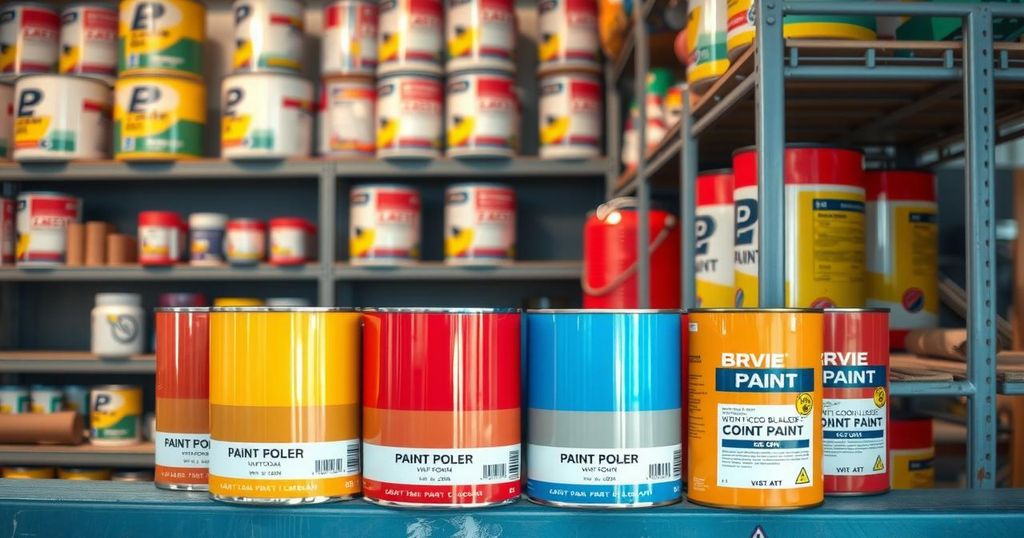JoyNews Investigation Reveals Toxic Lead Levels in Ghanaian Paints

JoyNews’ investigation revealed that high levels of lead are present in paints sold in Ghana, with 15 out of 46 samples exceeding safe limits. The situation is worsening, as some paints that were previously safe have now become hazardous. Regulatory gaps and smuggling complicate the enforcement of safety standards. Urgent action is needed to protect vulnerable populations, particularly children.
A recent investigative report by JoyNews has revealed troubling toxicity levels in paints marketed as “American” in Ghana. The study, conducted in collaboration with Ghana’s regulatory agencies, found that out of 46 paint samples tested, 15 exhibited lead concentrations significantly exceeding the acceptable limit of 90 parts per million (ppm). Alarmingly, the number of contaminated samples has risen sharply from the previous year, with the most extreme instance registering a staggering 200,000 ppm.
Exposure to lead-based paint poses serious health risks, particularly for pregnant women and children, potentially resulting in irreversible brain damage and neurological disorders. Despite the dangers, the low price of these paints compared to locally manufactured alternatives may be contributing to their widespread use among households. However, these products lack certification from the Ghana Standards Authority, as noted by Prof. Alex Dodoo, the Authority’s CEO, indicating a significant regulatory oversight issue.
The regulatory landscape surrounding imported paints has become increasingly complex. The Ghana Standards Authority asserts that oversight has been transferred to the Food and Drugs Authority (FDA), while the FDA contends it does not have jurisdiction over paint imports. This regulatory conflict hinders the enforcement of safety standards, leaving a gap that importers exploit, as some reportedly collaborate with customs officials to smuggle hazardous paints into the Ghanaian market.
Notably, while some local manufacturers have successfully improved their lead levels since a 2013 United Nations Environment Programme investigation, the influx of uncertified imports continues to pose a serious public health threat. Furthermore, the deceptive branding of these paints as “American” lures consumers into purchasing unsafe products. Experts emphasize the urgent need for intervention to protect vulnerable populations, particularly children, from the ongoing risk of lead poisoning.
In conclusion, the investigation conducted by JoyNews has highlighted the alarming presence of high-lead paints in Ghana, posing severe health risks to consumers, especially children and pregnant women. The lack of regulatory oversight due to jurisdictional conflicts between agencies further complicates the issue. It is imperative for stakeholders to urgently address these concerns to mitigate the dangers posed by these toxic paints.
Original Source: www.myjoyonline.com







